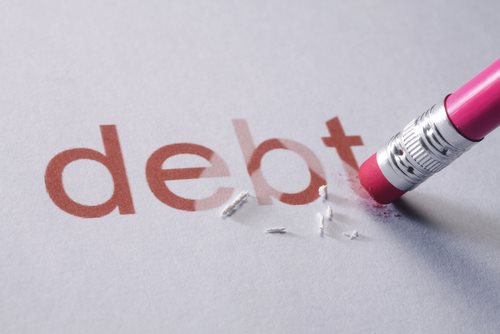Quick Guide to Locating Governmental Jobs


 What is the National Endowment of the Arts (NEA)?
What is the National Endowment of the Arts (NEA)?
The National Endowment of the Arts is an Independent Federal Agency responsible for the review, provision, and assessment of funding and grants awarded to individuals and groups whose participation in – and development of – the arts are considered to be of great merit and contribution. In conjunction to the awards process latent existing on a Federal level, all funding and investments furnished are done so based solely on merit; the board of directors serving the NEA are comprised of individuals considered to be pioneers and visionaries within the fields of performing and visual arts:
NEA Quick Facts
The following details outline the structuring of the NEA:
The NEA was founded on September 29th, 1965 in conjunction with the passing of the National Foundation on the Arts and the Humanities Act of 1965, which served to provide administrative terms and conditions regarding grants, funding, and organized study of the discipline of art and humanities – ‘the arts’ are defined as any artistic expression, creation, or activity undertaken by a group or individual
The headquarters of the NEA are located in Washington, D.C.
The current chairperson of the NEA is Rocco Landesman, who gained his respective notoriety through years of production efforts in the realm of theatre; Landesman has produced a multitude of Broadway shows and performances
Independent Government Agencies
In contrast to non-independent government agencies, whose overseeing bodies may range from the Department of Energy to the Department of Transportation, independent government agencies, such as the NEA are not required to report to such a department. However, while non-independent government agencies are classified as existing under the jurisdiction of the Executive, Legislative, and Judicial branches, the NEA – as well as the bulk of independent government agencies – are under varying degrees of the Executive branch’s jurisdiction.
Issues and Affairs Undertaken by the NEA
The foundation of the NEA was implemented in order to address matters concerning the artistic community; the following legal and administrative matters and affairs are most commonly related to the operation of the NEA:
NEA Grants
NEA grants are a method of funding for individual artists considered to display excellence within their respective artistic field(s); although the review process with regard to the awarding of NEA grants undergoes a variety of stringent and specified investigation, the NEA is committed to providing sustenance and aid for the artisitci community.
NEA: Legal Information and Further Assistance
The operation and administration of the NEA resides under the jurisdiction of the legal field classified as Administrative Law; this genre of law is primarily associated with events and circumstances in which the Federal Government of the United States engages its citizens, including the administration of government programs, the administration and operation of government agencies, and the establishment of a legal, regulatory federal standard – you can find both the primary address and telephones number of the NEA below:
National Endowment of the Arts
1100 Pennsylvania Avenue, NW
Washington, D.C.
 What is the National Endowment of the Humanities (NEH)?
What is the National Endowment of the Humanities (NEH)?
The National Endowment of the Humanities is an Independent Federal Agency implemented in order to address matters concerning the provision and furnishing of Federal grants and awards with regard to individuals and institutions existing within the discipline of ‘humanities’. The NEH was founded on September 29th, 1965in conjunction with the passing of the National Foundation on the Arts and the Humanities Act of 1965, which served to provide administrative terms and conditions regarding grants, funding, and organized study of the discipline of humanities – humanities is defined as an educational field rooted within studies, analysis, and investigation of the conditions and creation of humankind:
Examples of Humanities Studies
In addition, to law, religion, technology, and literature, the following disciples are considered to be amongst the most primary forms and examples of the discipline of the humanities:
Linguistics; the study of the origins, mechanics, usage, and formulation of language
Sociology; the study of human behavior with regard to their respective societies
Anthropology; the study of human behavior with regard to their area and age of existence
Philosophy; the analysis and participation in structural and expressive thought undertaken by humankind
NEH Quick Facts
The following facts are applicable to both the management and operations of the NEH:
Independent Federal Agencies are typically without a single director or executive; in contrast, independent government agencies – such as the NEH – are overseen by an executive directorial board; due to this fact, the Executive Branch retains less managerial oversight of the NEH than its agency counterparts
Although the President of the United States retains administrative jurisdiction over the NEH, the presence of a committee of directors allows for a decreased executive authority over hiring, staffing, and administration
The headquarters of the NEH are located in Washington, D.C.
The NEH is administered by an executive board chaired by Jim Leach
Independent Government Agencies vs. Executive Government Agencies
Independent Government Agencies are specific organizations and bureaus under the over arching jurisdiction of the Federal Government of the United States; however, these independent agencies are typically without a specified Department responsible for their respective oversight and administration. However, while non-independent government agencies are classified as existing under the jurisdiction of the Executive, Legislative, and Judicial branches, the NEH – as well as the bulk of independent government agencies – are under varying degrees of the Executive branch’s jurisdiction.
NEH: Legal Information and Further Assistance
The operation and administration of the NEH resides under the jurisdiction of the legal field classified as Administrative Law; this genre of law is primarily associated with events and circumstances in which the Federal Government of the United States engages its citizens, including the administration of government programs, the administration and operation of government agencies, and the establishment of a legal, regulatory federal standard – you can find both the primary address and telephones number of the NEH below:
National Endowment of the Humanities
1100 Pennsylvania Avenue, NW
Washington, D.C.
20506
(800) 634-1121

 What is the National Liquidity Facility (NLF)?
What is the National Liquidity Facility (NLF)?
The National Liquidity Facility exists within the National Credit Union Administration (NCUA), which serves as a federal agency responsible for the jurisdiction over the National Liquidity Facility; the NLF serves to not only regulate, but also to provide the oversight of all matters and affairs regarding credit through the provision of insurance in order financial disaster.
Independent Federal Agencies are typically without a single director or executive; in contrast, independent government agencies – such as the NLF – are overseen by an executive directorial board; due to this fact, the Executive Branch retains less managerial oversight of the NLF than its agency counterparts. Although the President of the United States retains administrative jurisdiction over the NLF, the presence of a committee of directors allows for a decreased executive authority over hiring, staffing, and administration. The following details outline the structuring of the NLF:
The headquarters of the NLF are located in Alexandria, Virginia
Both the NCUA and the NLF share an administration board; currently, this board consists of 1 president, 2 vice presidents, and 2 loan officers – J. Owen Cole, Jr. serves as the current president of both the NLF and the NCUA
Independent Government Agencies
While non-independent government agencies are classified as existing under the jurisdiction of the Executive, Legislative, and Judicial branches, the NLF – as well as the bulk of independent government agencies – are under varying degrees of the Executive branch’s jurisdiction:
Issues and Affairs Undertaken by the NLF
The foundation of the NLF was implemented in order to address matters concerning credit unions and liquid assets; the following legal and administrative matters and affairs are most commonly related to the operation of the NLF:
Liquidity is defined as the value of an asset reflecting a set amount of worth subsequent to its prospective sale or exchange; in contrast to traditional asset valuation, which conveys the gross value of an asset while in possession of an individual or a financial institution, liquidity – monitored by the NLF – addresses a specified, monetary equivalent value with regard to its sale
NLF: Legal Information and Further Assistance
The operation and administration of the NLF resides under the jurisdiction of the legal field classified as Administrative Law; this genre of law is primarily associated with events and circumstances in which the Federal Government of the United States engages its citizens, including the administration of government programs, the administration and operation of government agencies, and the establishment of a legal, regulatory federal standard – you can
 What is the Code of Federal Regulations?
What is the Code of Federal Regulations?
The Code of Federal Regulations is the official codification of the general and permanent rules and regulations—referred to in a broad sense as administrative law—published in the Federal Register. The Code of Federal Regulations is affirmed in this daily publication by the various executive departments and agencies of the United States Federal Government. The Code of Federal Regulations is published by the Office of the Federal Register—an administrative agency that operates within the National Archives and Records Administration.
Administrative law, which is a type of public law, exists because the United States Congress typically grants authority to the agencies of the executive branch in order to interpret the statutes in the United States Code. These statutes are then enforced by various agencies because Congress and other departments may be too busy or congested to micromanage the jurisdiction regarding writing statutes to cover every possible detail.
These rules are treated by the courts as legally binding forms of statutory law, provided that the regulations are a reasonable interpretation of the underlying statutes. For example, if the United Stats Congress passed a law that stated there are not be excessive levels of mercury in any body of water in the country, an entity, such as the United States Environmental Protection Agency could further define, through a scientific lens, what the exact meaning of an “excessive level of mercury” is. The agency’s definitions and its subsequent plan of enforcement will all be published into the code of federal regulations.
Publication of the Code of Federal Regulations:
The rules and regulations are first created and published in the Federal Register; each is then given a code of federal regulation number, such as 42 CFR460 11 (a) (1), that will be cited immediately. The aforementioned code of federal regulation would read as: “title 42, part 460, section 11, paragraph a 1.


Welfare facilities are those facilities which are used by employees on a daily basis during the course of their workday. These facilities may be basic, but help employees to meet their general welfare needs.
Welfare facilities include bathrooms. There must be a reasonable number of bathroom facilities available in proportion to the number of employees. These facilities must include a toilet and a sink, both of which must be kept clean.
Bathroom facilities must also be accessible to the handicapped, even if no employee is, in fact, handicapped.
A welfare facility must also include an area to change clothing, even if this area is found in the bathroom.
Each employer must also provide a welfare facility for employees to take their breaks. This must include an area where employees can sit down.

 What is a Debt Collection Agency?
What is a Debt Collection Agency?
A debt collection agency is a business that pursues payments of debts owed by individual borrowers or businesses who take out loans to finance their operating model. The majority of collection agencies will operate as agents of creditors; a lender will hire a debt collection agency to expedite the debt collection process. A debt collection agency will attempt to collect debts of a borrower for a fee or percentage of the total amount owed.
There are numerous types of debt collection agencies; first-party agencies are often subsidiaries of the original company the debt is owed to, whereas third-party agencies are separate companies are contracted by a company to collect debts on their behalf without charge. Furthermore, debt buyers will purchase debts at a small fraction of its value, then attempt to collect it. The practices of a debt collection agency can be very aggressive and each country, as well as jurisdiction, will place its own rules and regulations regarding them.
Types of Debt Collection Agencies:
First-Party Agencies: This type of debt collection agency is an actual department or subsidiary of the company that owns the original debt. A first-party debt collection agency will typically get involved earlier in the debt collection process and have a greater incentive to maintain a constructive customer relationship. Because the first-party agency is a part of the original creditor, this particular type of debt collection agency may not be subject to legislation which governs third-party collection agencies.
Third-Party Agencies: The generic terms collection agency is typically applied to third-party agencies; the average collection agency takes this form because they were not a party to the original contract. In this format, the creditor assigns accounts directly to such an agency on a contingency-fee basis, which will typically cost nothing to the creditor or merchant, except for the cost of communications.